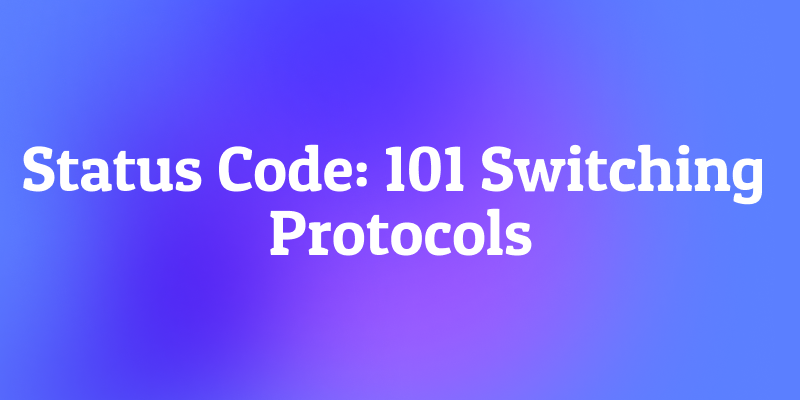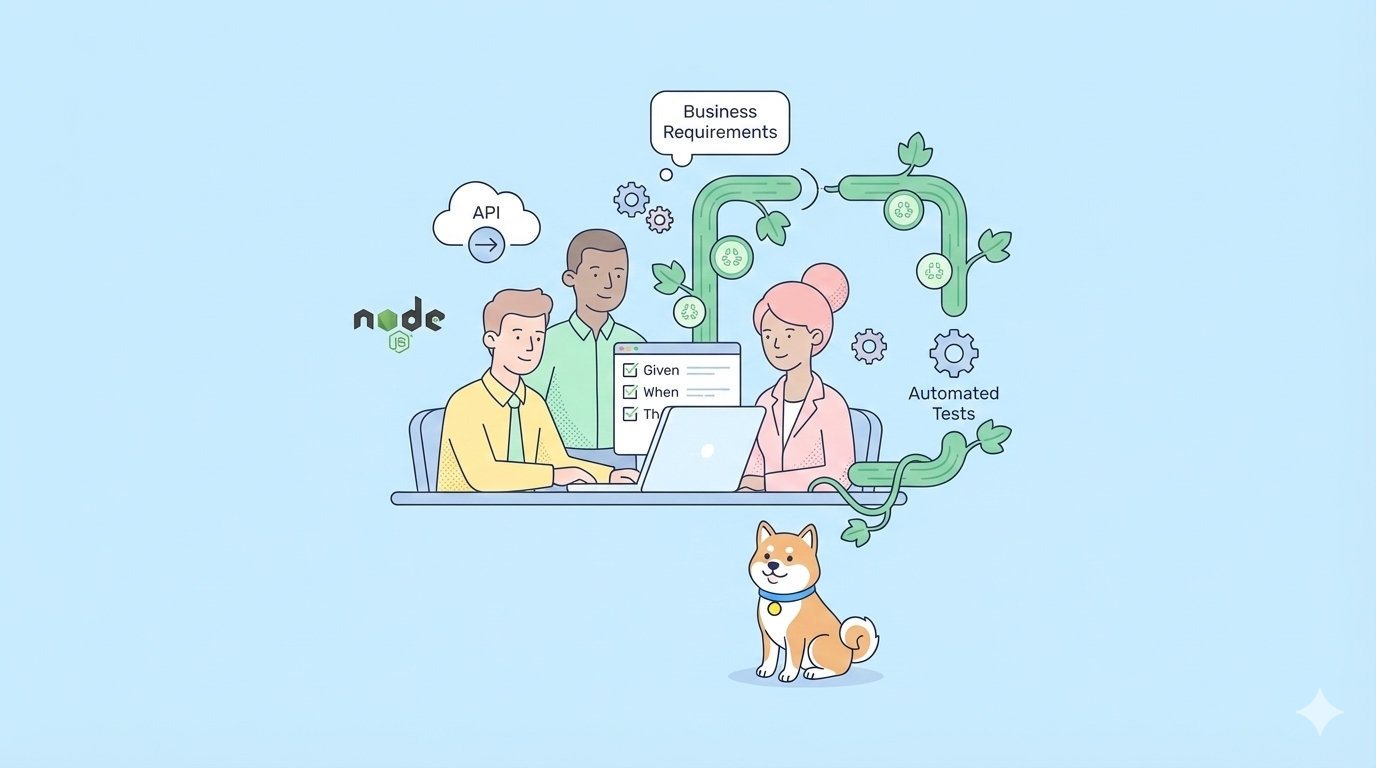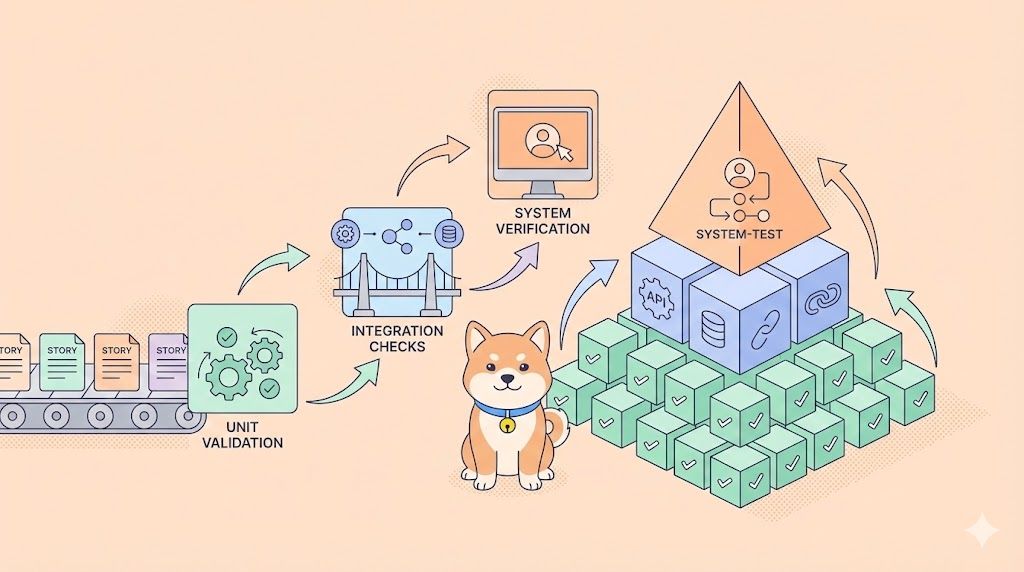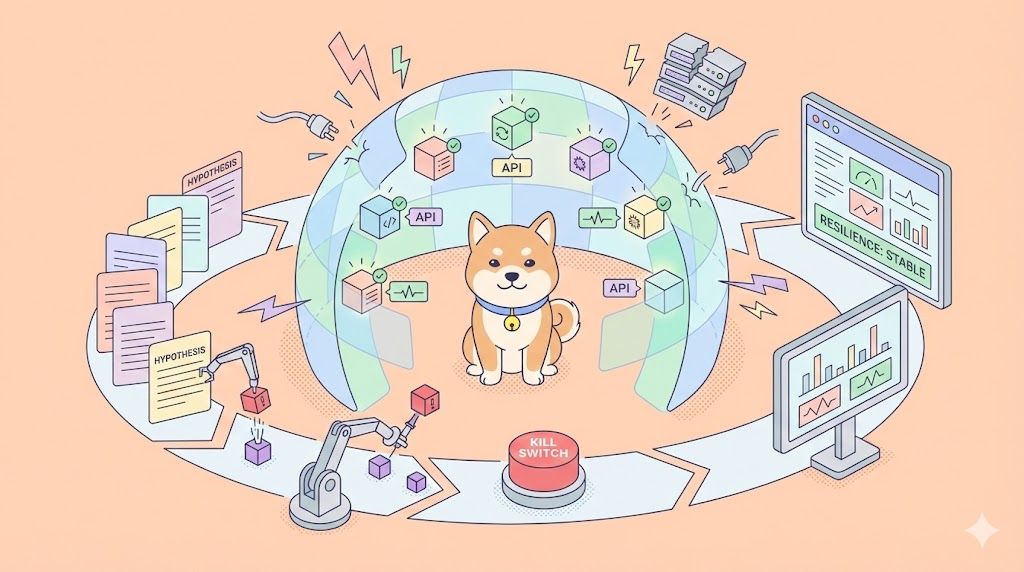You're using a live chat feature on a website. Messages appear instantly without you hitting refresh. You're playing a browser-based game where every player's move is reflected on your screen in real-time. This magic feels seamless, but under the hood, a critical transformation is taking place. The very language your browser is using to talk to the server is changing mid-conversation.
This transformation is made possible by one of the most dynamic and specific HTTP status codes: 101 Switching Protocols.
Unlike its more common cousins that report on the success or failure of a request, the 101 status code is an action. It's not a report; it's a trigger. It's the server's way of saying, "Okay, let's stop using HTTP for this conversation and switch to something more suited for the job."
It's the digital equivalent of two spies meeting in a public park. They start with a casual, ordinary conversation (HTTP) to ensure everything is safe. Then, once they've verified each other, one says, "The eagle has landed" (the Upgrade header). The other nods and says, "Follow me" (the 101 response). They then leave the public space and switch to a secure, private, and highly efficient line of communication (like a WebSocket).
If you're curious about how real-time web applications break free from the limitations of traditional HTTP, this code is the key you're looking for.
And before we dive into the technical handshake, if you're a developer building real-time features like chat, live feeds, or multiplayer games, you need a tool that can debug these complex protocol negotiations. Best of all, you can download Apidog for free and start today; it's an all-in-one API platform that provides deep visibility into the entire connection lifecycle, including the crucial 101 upgrade process, helping you ensure your WebSocket and other protocol connections are established flawlessly.
Now, let's pull back the curtain on this fascinating protocol switch.
Setting the Stage: The Right Tool for the Job
To understand why we need to switch protocols, we must first understand the limitation of the standard HTTP protocol.
HTTP is built on a simple, stateless request-response model.
- Client: "Can I have the homepage, please?" (
GET /) - Server: "Here it is." (
200 OK+ HTML) - Connection: The conversation is essentially over. Any new data requires a brand new request.
This is perfect for loading documents, images, and stylesheets. But it's terrible for anything that requires persistent, real-time, two-way communication.
Imagine trying to have a fluid conversation where after every sentence, you hang up the phone and have to call back. That's what building a chat app on pure HTTP would be like. This is often called the "HTTP polling" problem, and it's incredibly inefficient.
We need a different protocol for real-time tasks a protocol that allows for a persistent connection where either side can send messages at any time. The most famous of these is the WebSocket protocol.
But there's a challenge: how does a conversation that starts as an HTTP request (how all web traffic starts) transform into a WebSocket connection?
The answer is the HTTP 101 Switching Protocols status code.
What is Status Code 101 Switching Protocols?
The HTTP 101 Switching Protocols status code belongs to the 1xx (Informational) class of responses. Like other 1xx codes (such as 100 Continue), it’s not the final response. Instead, it’s a signal from the server that something special is happening.
Specifically, 101 Switching Protocols tells the client:
“I understand your request to change the communication protocol, and I’ve agreed to switch.”
For example:
- A client starts with HTTP/1.1 but wants to upgrade to WebSockets.
- The client sends an
Upgradeheader in the request. - The server replies with 101 Switching Protocols if it supports that upgrade.
- From that point on, communication continues in the new protocol.
This allows for more efficient, modern communication methods while maintaining backward compatibility with existing HTTP infrastructure.
Why Does 101 Switching Protocols Exist?
To understand why this status code exists, let’s look at a simple analogy.
Imagine you walk into a meeting room and start speaking English. Halfway through, someone says, “Let’s switch to Spanish it’ll be easier for everyone.” If everyone agrees, the conversation seamlessly continues in Spanish.
That’s basically what happens with 101 Switching Protocols.
HTTP originally was designed as a stateless, request-response protocol for fetching documents. But as web applications evolved, the need arose for real-time, full-duplex, or smarter client-server communication.
The 101 status code was introduced to allow clients and servers to upgrade the protocol mid-connection without closing and reopening a new connection. This upgrade mechanism benefits scenarios like:
- Establishing WebSocket connections for real-time chats or notifications.
- Moving from HTTP/1.1 to newer versions like HTTP/2 or HTTP/3 seamlessly.
- Allowing other custom protocol switches over the same TCP connection.
Without 101 Switching Protocols, these seamless transitions wouldn’t be possible or would require costly connection resets.
How Switching Protocols Works in the Request-Response Cycle
Here’s a simplified breakdown of the 101 Switching Protocols handshake:
Client → Server:
The client sends an HTTP request with an Upgrade header. Example:
GET /chat HTTP/1.1
Host: example.com
Upgrade: websocket
Connection: Upgrade
Server → Client:
If the server supports the requested upgrade, it replies with:
HTTP/1.1 101 Switching Protocols
Upgrade: websocket
Connection: Upgrade
Client & Server:
From this point onward, they stop using HTTP and start communicating via the upgraded protocol (in this case, WebSocket).
The HTTP conversation is over. If you were to send another HTTP request over this same connection, it would fail. The rules of the game have changed entirely. Now, both sides can send WebSocket data frames (messages) back and forth at will, in a full-duplex, real-time manner.
Example of 101 Switching Protocols in Action
Let’s say you’re building a chat app that uses WebSockets. Here’s how it might look under the hood.
Client Request (initiating WebSocket upgrade):
GET /chat HTTP/1.1
Host: chat.example.com
Upgrade: websocket
Connection: Upgrade
Sec-WebSocket-Key: x3JJHMbDL1EzLkh9GBhXDw==
Sec-WebSocket-Version: 13
Server Response (agreeing to switch):
HTTP/1.1 101 Switching Protocols
Upgrade: websocket
Connection: Upgrade
Sec-WebSocket-Accept: HSmrc0sMlYUkAGmm5OPpG2HaGWk=
From here, the HTTP connection upgrades into a WebSocket connection. Messages are now exchanged in real-time over a persistent connection.
Beyond WebSockets: Other Uses for 101
While WebSockets are the most famous use case, the Upgrade mechanism is a general-purpose feature of HTTP/1.1. It can be used to negotiate other protocols as well.
- HTTP/2: While HTTP/2 is often negotiated during the TLS handshake (as ALPN), it can also be upgraded via an HTTP/1.1
Upgradeheader, though this is less common. - IRC (Internet Relay Chat): A client could theoretically request to upgrade an HTTP connection to an IRC protocol connection.
- Custom Protocols: Organizations could define their own proprietary protocols for specialized tasks and use the HTTP upgrade mechanism to initiate them.
However, in practice, the widespread adoption and security requirements of the modern web have made the WebSocket upgrade the primary, and almost exclusive, use case for the 101 Switching Protocols status code.
Real-World Use Cases (Especially WebSockets)
The most common use case for 101 Switching Protocols is WebSockets, which allow two-way, real-time communication between client and server.
Some examples include:
- Chat applications: Slack, WhatsApp Web, Discord.
- Stock market apps: Live updates on stock prices.
- Gaming: Real-time multiplayer games.
- Collaboration tools: Google Docs-style live editing.
- Custom Protocol Upgrades: Less commonly, proprietary protocols can upgrade an HTTP connection when agreed upon by both parties.
Another use case involves HTTP/2 and HTTP/3 upgrades, though those are less common since most browsers handle them automatically.
Why is this Handshake Necessary? The Genius of the Design
You might wonder why we need this complex HTTP handshake. Why not just open a WebSocket connection directly?
- Compatibility with the Web's Infrastructure: The entire web is built on HTTP. Firewalls, proxies, load balancers, and routers are all configured to understand and allow HTTP traffic on ports 80 and 443. By starting as an HTTP request, the WebSocket handshake looks like any other web traffic, ensuring it can pass through most network infrastructure without being blocked. It's a clever "trojan horse" strategy.
- Security: The handshake allows the use of all standard HTTP features for authentication and authorization before the upgrade. The initial
GETrequest can include cookies andAuthorizationheaders. The server can check if the user is logged in and has permission to open a real-time channel before agreeing to the101upgrade. - Protocol Negotiation: The handshake allows the client and server to agree on which protocol and which version of that protocol to use. The
Sec-WebSocket-Versionheader ensures they are both speaking the same "dialect" of WebSocket.
What Happens if the Server Does Not Support the Upgrade?
If the server does not accept the upgrade request, it will typically:
- Return a 200 OK with the standard HTTP response, ignoring the upgrade header.
- Or respond with a 426 Upgrade Required status, indicating the client must upgrade.
Benefits of Switching Protocols
Why use 101 Switching Protocols at all? Here are the advantages:
- Efficiency: Switch from request-response (HTTP) to real-time communication (WebSockets).
- Flexibility: Allows different protocols without starting new connections.
- Performance: Reduces latency by avoiding constant reconnections.
- Scalability: Better suited for apps requiring continuous data flow.
Common Issues and What They Mean
If you're implementing a WebSocket server, here's what different server responses mean:
101 Switching Protocols: Success! The connection has been upgraded.200 OKor any other 2xx code: This is a problem. It means the server ignored theUpgradeheader and is treating the request as a normal HTTP request. It's probably just going to send back HTML/JSON.302 Found/301 Moved Permanently: A redirect. The client should resend the upgrade request to the new URL provided in theLocationheader.400 Bad Request: The server didn't like the handshake request. This is often due to a missing or invalidSec-WebSocket-Keyheader, an unsupportedSec-WebSocket-Version, or a malformed request.401 Unauthorized/403 Forbidden: The server requires authentication before it will allow the WebSocket upgrade. The client needs to provide credentials in the initial request headers.404 Not Found: The WebSocket endpoint path (e.g.,/chat) doesn't exist on the server.
Handling the 101 Switching Protocols Status in Your Application
If you’re building applications that require protocol switching:
- Ensure your server supports and correctly handles upgrade requests.
- If using WebSockets, implement the proper handshake including headers and security validation.
- Test transition logic rigorously to handle unexpected failures or protocol incompatibility.
This is where APIs and testing platforms become crucial.
Debugging the 101: The Invisible Transition
For developers, the 101 process can be tricky to debug because it's a transitional moment. Once the switch happens, standard HTTP debugging tools often lose visibility.
This is where a sophisticated API platform like Apidog becomes indispensable. Apidog isn't just for REST APIs; it has first-class support for WebSockets.
With Apidog, you can:
- Create a WebSocket Request: Easily specify the WebSocket URL (
ws://orwss://). - Inspect the Handshake: Apidog will show you the raw HTTP upgrade request and the server's
101response, allowing you to verify the headers and theSec-WebSocket-Acceptcalculation. - Test the Connection: After the upgrade, you can switch to a WebSocket interface to send and receive messages (frames), allowing you to thoroughly test your real-time logic.
- Debug Errors: If the upgrade fails (e.g., the server returns a
400 Bad Requestinstead of a101), Apidog helps you see why perhaps a missing header or an authentication error on the initial request.
This visibility transforms the upgrade process from a mysterious black box into a transparent, debuggable sequence of events.
Testing Switching Protocols with Apidog
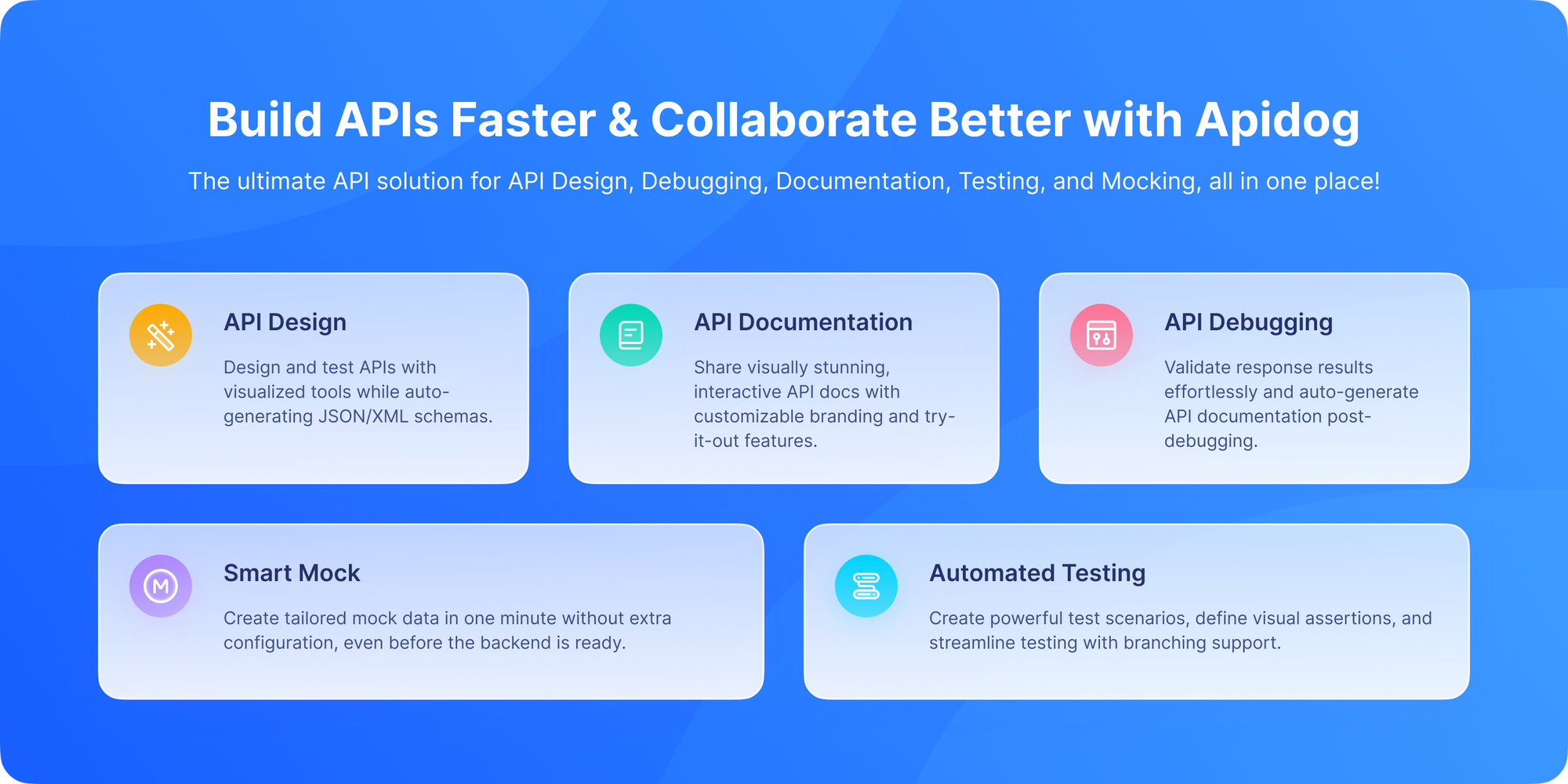
When you’re building APIs or WebSocket-enabled apps, it’s essential to test protocol upgrades. Testing protocol upgrades can be tricky because it involves multiple phases and different communication methods.
This is where Apidog comes in:
- You can simulate WebSocket connections.
- Inspect handshake requests and responses (including
101 Switching Protocols). - Debug header mismatches that might block upgrades.
- Share test cases with your team for consistency.
In short, Apidog makes handling complex workflows like protocol switching much easier. Try Apidog for free and enhance your confidence when deploying APIs or apps that depend on protocol upgrades!
Best Practices for Developers
Here are some tips for handling 101 Switching Protocols properly:
- Always use secure connections (
wss://instead ofws://). - Validate Upgrade headers carefully.
- Provide fallback mechanisms (e.g., use long-polling if WebSocket upgrade fails).
- Monitor and log protocol switching events for debugging.
- Test extensively with Apidog to ensure upgrades work across environments.
The Bigger Picture: Enabling the Real-Time Web
The HTTP 101 Switching Protocols status code is a small but mighty enabler of the modern web experience. It's the critical bridge between the document-centric world of HTTP and the interactive, dynamic world of real-time communication.
Without this mechanism, technologies like WebSockets would be much harder to deploy at scale, and the responsive, live web applications we take for granted from collaborative tools like Google Docs to live sports updates and notification systems would be far more clunky and inefficient.
Conclusion: More Than Just a Status Code
So, what is status code 101 Switching Protocols? In simple terms, it’s the server saying:
“I agree to switch from HTTP to another protocol, like WebSocket.”
The 101 is a fascinating example of a pragmatic and elegant solution to a complex problem. It's not just a number; it's a gateway. It represents the flexibility and evolution of web standards, allowing new, specialized protocols to emerge while maintaining backward compatibility with the entire existing web infrastructure. This status code is all about flexibility and efficiency, enabling real-time apps, faster communication, and modern use cases like chat, gaming, and stock updates.
Understanding this code gives you a deeper appreciation for the engineering that makes the real-time web possible. And if you’re testing APIs, debugging WebSocket upgrades, or simply exploring HTTP status codes, Apidog is the tool you need. It makes it incredibly easy to test, document, and debug APIs including those that involve protocol switching.
So why wait? Download Apidog for free today and start experimenting with protocol switching the right way and navigate the upgrade process with confidence, clarity, and control.
